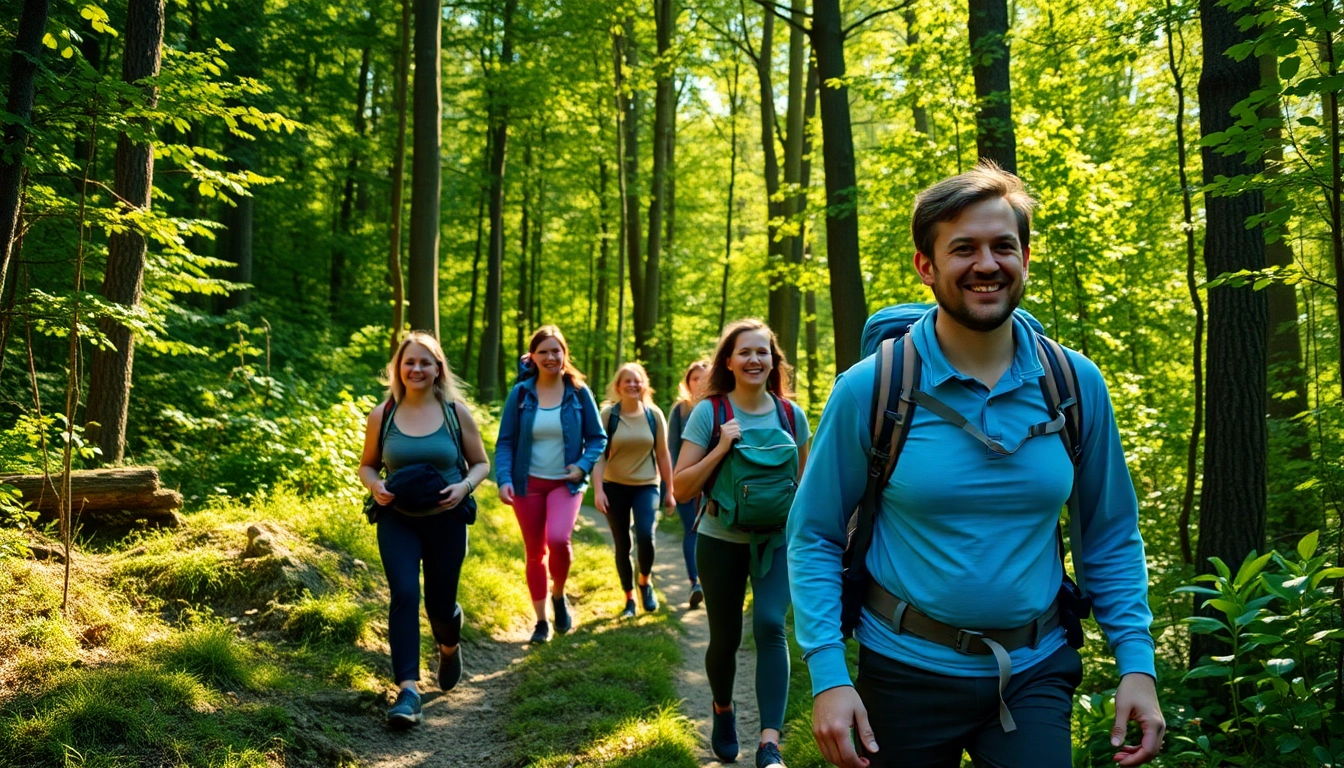Understanding Hiking: Definitions and Types of Hikes
Hiking, a vigorous and often scenic outdoor activity, has evolved into a beloved pastime for millions worldwide. It provides an immersive way to connect with nature, enhance physical health, and find mental tranquility. At its core, a hike is more than just walking; it is an experience that combines adventure, exploration, and physical endurance. Whether traversing forested trails, mountain paths, or coastal footpaths, hiking offers diverse opportunities to discover new landscapes while enjoying the benefits of outdoor recreation.
To better understand this activity, it’s important to explore what constitutes a hike, the various types of hiking adventures available, and how hiking differs from simple walking. Each facet offers unique challenges and rewards, catering to a wide spectrum of skill levels and interests.
What Constitutes a Hike?
A hike can be defined as a long, vigorous walk typically conducted on trails or footpaths. Unlike casual strolls, hikes often involve navigating uneven terrains, inclines, and natural obstacles. The key characteristics include a planned route, physical effort, and an element of adventure. It’s an activity that promotes not only physical health but also mental well-being by enabling individuals to disconnect from routine distractions and immerse themselves in nature’s serenity.
The term ‘hike’ also encompasses broader meanings, such as a significant increase in prices or quantities, but in the context of outdoor activity, it universally refers to walking in natural settings that challenge the walker physically and mentally.
Different Types of Hiking Adventures
Hiking encompasses a broad spectrum of experiences, each suited to different interests and fitness levels. Some of the most common types include:
- Nature Hikes: Focused on observing flora, fauna, and landscapes, these hikes often take place in national parks, wildlife reserves, or remote countryside.
- Trail Hiking: Usually on marked trails or footpaths, trail hikes can vary from gentle walks to strenuous mountain ascents.
- Backpacking: Multi-day hikes that involve carrying gear and supplies, allowing for extended exploration and immersive experiences.
- Urban Hiking: Exploring city parks, urban trails, or architectural landmarks on foot, combining cultural sightseeing with physical activity.
- Extreme or Adventure Hiking: Includes challenging terrains such as mountain summits, rocky cliff faces, and wilderness survival routes for seasoned hikers.
Hiking vs. Walking: Key Differences
Although often used interchangeably, hiking and walking differ significantly in purpose, terrain, and intensity. Walking generally takes place on flat, well-maintained surfaces like pavements or park pathways, offering a casual, low-impact form of exercise for leisure or transportation. Hiking, on the other hand, involves navigating unpredictable natural terrains, often requiring endurance, agility, and specialized gear.
For clarity, walking may be part of a hiking routine, but a hike entails a deliberate engagement with nature’s challenges—steep inclines, uneven ground, and variable weather. Understanding these distinctions helps enthusiasts select suitable activities aligned with their physical capabilities and adventure aspirations.
Preparing for a Successful Hike
Choosing the Right Trail & Duration
Selecting an appropriate trail is foundational to a enjoyable hike. Start by assessing your fitness level, experience, and the desired challenge. For beginners, beginner-friendly trails with gentle inclines and clear signage are recommended, such as those in well-maintained parks or nature reserves. Experienced hikers seeking more adventure should consider trails with significant elevation gains, rugged terrains, or multi-day routes.
Accurate trail descriptions—including total distance, elevation profile, expected weather, and terrain type—are vital. Resources like local hiking clubs, national park websites, and trail apps can provide valuable insights. Planning the duration of your hike, whether a quick morning trek or a full-day expedition, ensures you carry the right gear and pace yourself effectively.
Essential Gear and Safety Equipment
Proper gear enhances safety and comfort during your hike. Key items include:
- Footwear: Well-fitted, waterproof hiking boots or shoes with good traction are essential to prevent slips and blisters.
- Clothing: Layered clothing suitable for weather conditions, including moisture-wicking base layers, insulating mid-layers, and waterproof outer shells.
- Navigation Tools: Maps, compasses, and GPS devices help you stay on track, especially in remote areas.
- Safety Items: First aid kits, headlamps or flashlights, multi-tools, and whistles for emergencies.
- Food & Water: Sufficient hydration and nutritious snacks to maintain energy levels.
Additional safety measures include informing someone about your itinerary, checking weather forecasts, and carrying communication devices where cell service may be limited.
Planning Your Route and Assessing Conditions
Pre-hike planning involves detailed route mapping and understanding environmental conditions. Knowledge of potential hazards such as wildlife, steep slopes, or river crossings is crucial. Utilizing trail maps and topographical charts helps visualize elevation changes and identify potential challenges.
Environmental factors like weather, trail closures, and trail conditions influence decisions on timing and gear. Always check recent trail reports and forecasts before setting out. Being adaptable and having contingency plans for severe weather or emergencies ensures a safe hiking experience.
Hiking Techniques and Best Practices
Proper Walking Posture & Pace
Maintaining proper posture optimizes energy efficiency and reduces fatigue. Keep your head up, shoulders relaxed, and core engaged. Short, consistent strides help maintain stamina and balance on uneven ground. Adjust your pace to match terrain difficulty; slow down on steep inclines and rocky sections, and accelerate on flat segments to conserve energy.
Navigation Skills & Trail Etiquette
Navigating trails effectively involves reading maps, recognizing landmarks, and using compass or GPS tools. Equally important is trail etiquette: stay on designated paths to protect ecosystems, yield to uphill hikers, keep noise levels respectful, and pack out all trash. Respect wildlife and other hikers’ space to foster a positive outdoor environment.
Managing Challenges: Steep Terrains & Rough Paths
Challenges such as steep ascents or rocky paths test your physical and mental endurance. Techniques like controlled breathing, maintaining a steady rhythm, and using trekking poles can aid stability and reduce strain. When encountering difficult sections, assess safety first—sometimes detouring may be the best option.
Being prepared and adopting proper techniques minimizes risk and enhances overall enjoyment, regardless of trail difficulty.
Benefits of Hiking & Connecting with Nature
Physical and Mental Health Advantages
Hiking is a comprehensive workout that engages multiple muscle groups, improves cardiovascular health, and facilitates weight management. It also alleviates stress, reduces symptoms of depression and anxiety, and boosts mood through exposure to natural environments. Studies reveal that spending time outdoors can lower cortisol levels, enhance concentration, and foster overall mental resilience.
Environmental Awareness and Conservation
Regular hikers develop a deeper appreciation for Nature’s fragility and beauty. This connection often leads to active participation in conservation efforts, eco-friendly practices, and respectful trail use. By practicing Leave No Trace principles—such as packing out all waste, minimizing campfire impact, and staying on established trails—hikers contribute to preserving the environment for future generations.
Building a Hiking Routine and Community
Incorporating hiking into your regular routine promotes consistent physical activity. Joining local hiking groups or clubs fosters social connections, shared experiences, and mutual encouragement. Community-based hikes also enhance safety, motivation, and knowledge exchange, making hiking a sustainable and enriching activity.
Advanced Tips to Elevate Your Hiking Experience
Night Hiking & Weather Adaptations
Night hiking opens up new horizons, offering solitude and a chance to observe nocturnal wildlife. Proper headlamps, reflective gear, and knowledge of trail lighting are essential. Adjusting to cooler temperatures and lower visibility requires preparation, including layered clothing and familiarity with your equipment.
Weather can change rapidly; mastering weather adaptations like waterproofing gear, choosing appropriate clothing, and understanding trail conditions prevent mishaps. Always carry extra supplies in unpredictable conditions.
Recording Your Hikes & Using Technology
Modern technology, such as trail apps, GPS devices, and fitness trackers, enables hikers to record routes, monitor stats, and share experiences. Keeping a hiking journal or photo log enhances your connection to your adventures, providing motivation and insights for future trips.
Environmental Responsibility & Leave No Trace
Respecting the environment is fundamental, especially during long or remote hikes. Follow Leave No Trace principles: plan ahead, dispose of waste properly, minimize campfire impact, respect wildlife, and be considerate of other visitors. These practices ensure our outdoor spaces stay pristine and accessible for all.

